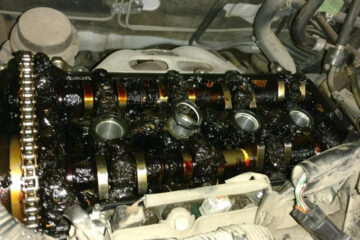7. Ignoring Warning Lights — When the Dashboard Tries to Save Your Engine
Modern engines come equipped with advanced sensors and diagnostics. When something goes wrong — from low oil pressure to misfires — your dashboard warning lights are the first (and often only) chance to fix the issue before major damage occurs. Ignoring them is like pulling the fire alarm and then going back to sleep.
The most critical lights are the oil pressure light and engine temperature warning. If either comes on, continuing to drive can destroy the engine in minutes. Even the “Check Engine” light, often overlooked, can indicate problems that increase wear or compromise fuel mixture.
Dangerous to ignore:
- Oil pressure warning = possible bearing failure
- Overheating = likely head gasket or warped head
- Flashing “Check Engine” = misfire → raw fuel → catalytic converter or cylinder damage
Prevention tip:
Don’t guess — scan the code with an OBD-II tool or have a mechanic check it immediately. Acting early can save thousands in repairs.
8. Dirty or Clogged Air Filter — The Engine Can’t Breathe
Your engine requires air just as much as it needs fuel. A dirty or clogged air filter chokes airflow, disrupts the fuel-air mixture, and reduces combustion efficiency. In extreme cases, it increases fuel consumption, lowers power, and can lead to incomplete combustion or fouled spark plugs.
Worse, a torn or improperly sealed filter lets dirt and grit into the intake — and from there into the cylinders. These abrasive particles can score cylinder walls, destroy piston rings, and wreak havoc on sensors.
Typical symptoms:
- Hesitation during acceleration
- Poor fuel economy
- Black smoke from exhaust (rich mixture)
Prevention tip:
Replace the air filter every 15,000–30,000 km, or more frequently in dusty environments. Check it visually at oil change intervals.



0 Comments